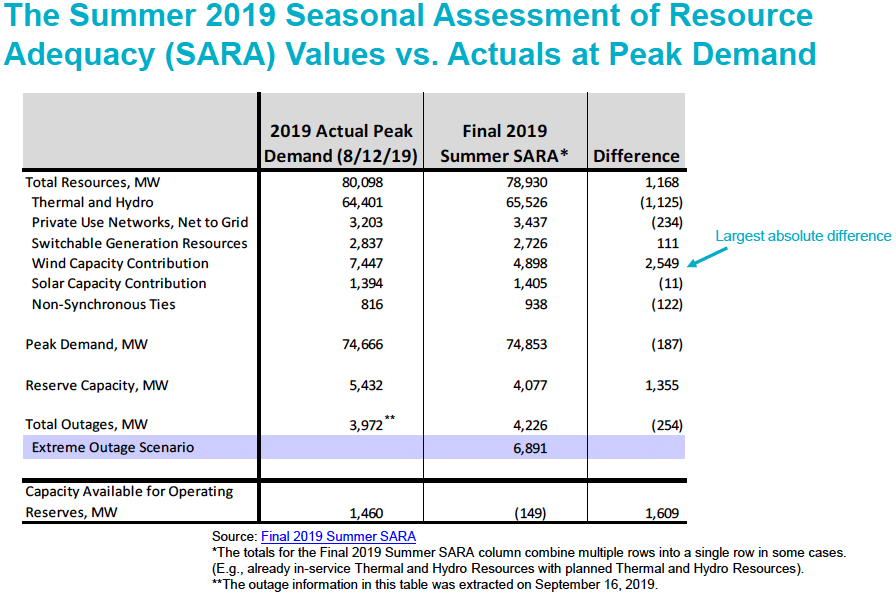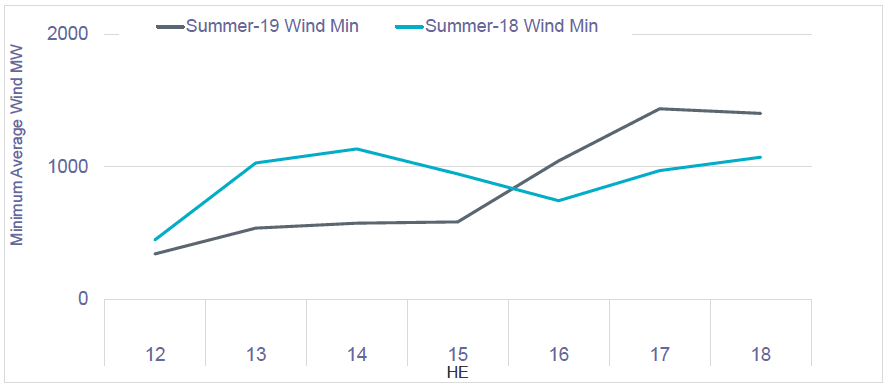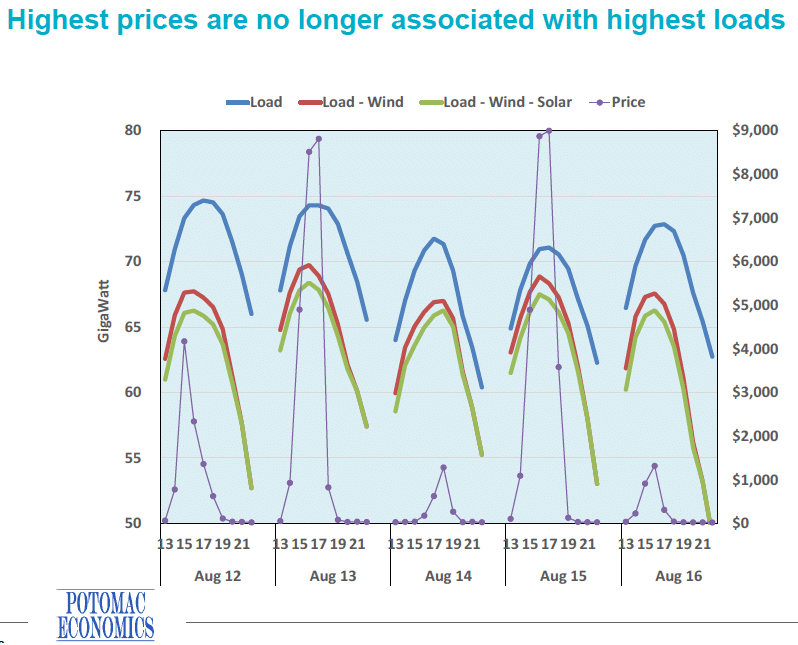For a state of its size, there isn’t a lot of solar installed in Texas. In fact, according to the state’s grid operator there was only 1.9 GW of utility-scale solar online in May, when the state was getting ready to go into the season of highest temperatures and peak demand.
However, that solar played a minor yet important role in keeping air conditioning units humming across the state, according to a set of reports by the Electric Reliability Council of Texas (ERCOT) which came out yesterday.
Outlined in ERCOT’s Summer 2019 Operational and Market Review, the state’s large solar plants connected to its transmission grid supplied 1.394 GW of power during the peak on August 12. This is when the state hit its highest electric demand to date at 74.7 GW, with temperatures hitting 105 in Austin and San Antonio.

This was within 1% of what ERCOT had predicted, suggesting that the grid operator is getting quite good at estimating just how much solar will be online during peak demand. It also means that, despite the highest demand to date and nearly 4 GW of outages, the system still had 1.5 GW of capacity available for operating reserves.

This and over-production of wind meant that, despite tight reserve margins, Texas only had to declare Energy Emergency Alerts twice – neither of which was on the day of highest demand – despite the 2nd hottest August on record.
It also meant that Texas’ notoriously erratic electricity prices were kept more stable than the previous summer. As documented in ERCOT’s Independent Market Monitor Report, the system hit its peak pricing of $9,000 per megawatt-hour on August 13 and August 15, although average prices for these afternoons were below $3,000 per megawatt-hour.
Wind over-performs
Texas has a lot more capacity in wind turbines than it does in solar panels, and the real story of how Texas avoided forced outages was that wind supplied more power than expected. During the afternoon of record peak demand on August 12, the system’s wind turbines generated 50% more than the assessment in ERCOT’s resource adequacy proposals, which allowed for 2.5 GW of extra power output.
As compared to the previous summer, Texas wind produced more later in the afternoon during the summer of 2019. This means that it was better able to help meet peak demand, a phenomenon which means that peak net load frequently occurred earlier in the day than peak demand.

ERCOT’s resource forecasts give small values to most land-based wind in the West, North, South and Central parts of the state, as it is hard to rely on wind in these regions during hot summer afternoons. Coastal wind tends to blow stronger in the afternoon, so its contributions towards meeting peak demand are given a higher value.
This reliance on land-based wind could be seen in the price peaks and emergency alerts on August 13 and 15, and ERCOT has concluded that net load – defined as load minus wind and solar – is a better predictor of higher prices than peak demand.

In general ERCOT gives solar a higher capacity value and, despite hotter summers, the flood of solar projects that have secured interconnection agreements, signed contracts with off-takers and begun construction in the region are a more predictable way to meet peak demand. So while wind may have played the biggest role in saving this summer for Texas, solar played its part, and next summer is likely to have a bigger role.
This content is protected by copyright and may not be reused. If you want to cooperate with us and would like to reuse some of our content, please contact: editors@pv-magazine.com.









I have the spreadsheets at home so I am going off of memory – I think ERCOT is expecting 7GW/28% of additional wind to be added between now and the end of next year (I don’t know how much in the first half) and solar to add at least 1GW (maybe 2GW). Next year might be another nail biter for ERCOT and Texas electric consumers, but 2021 should be eased quite a bit more.
I know solar proposals are around 64GW and those with Interconnect Agreements are over 8GW. Just getting the 8GW built would be a huge help.
Solar will as it grows chase the peak out of the afternoon and into the evening duck curve will be all that is left, just like in Cal.
Nice they mentioned coastal wind but far better than they say as the heat driven wind happened from noon to an hour after sunset, matching demand even better than tracking solar.
Even here in low wind Florida the sea breeze on the east coast comes like clockwork just when needed most.
This goes for a lot of coasts including large lakes generate sea and land breezes.
Some studies of the so called MARS blimp type wind generator could get the generator up to the 1,000 foot mark for a more stable wind speed to use more of the time for energy generation. It is said in general that in each doubling of the generation (cell) above ground, there is a 12% increase in wind speed, with each doubling of wind speed, there is an eight fold increase in wind power. The wind rating work done by the DOE on areas of the country that have viable winds for energy generation are rated from 1 to 7 in wind intensity. At 305 meters one could generate power in most of the U.S.. Would the FAA or the NIMBYs allow a blimp at 1,000, 2,000 feet or more to be allowed on ‘their’ horizons, probably not.